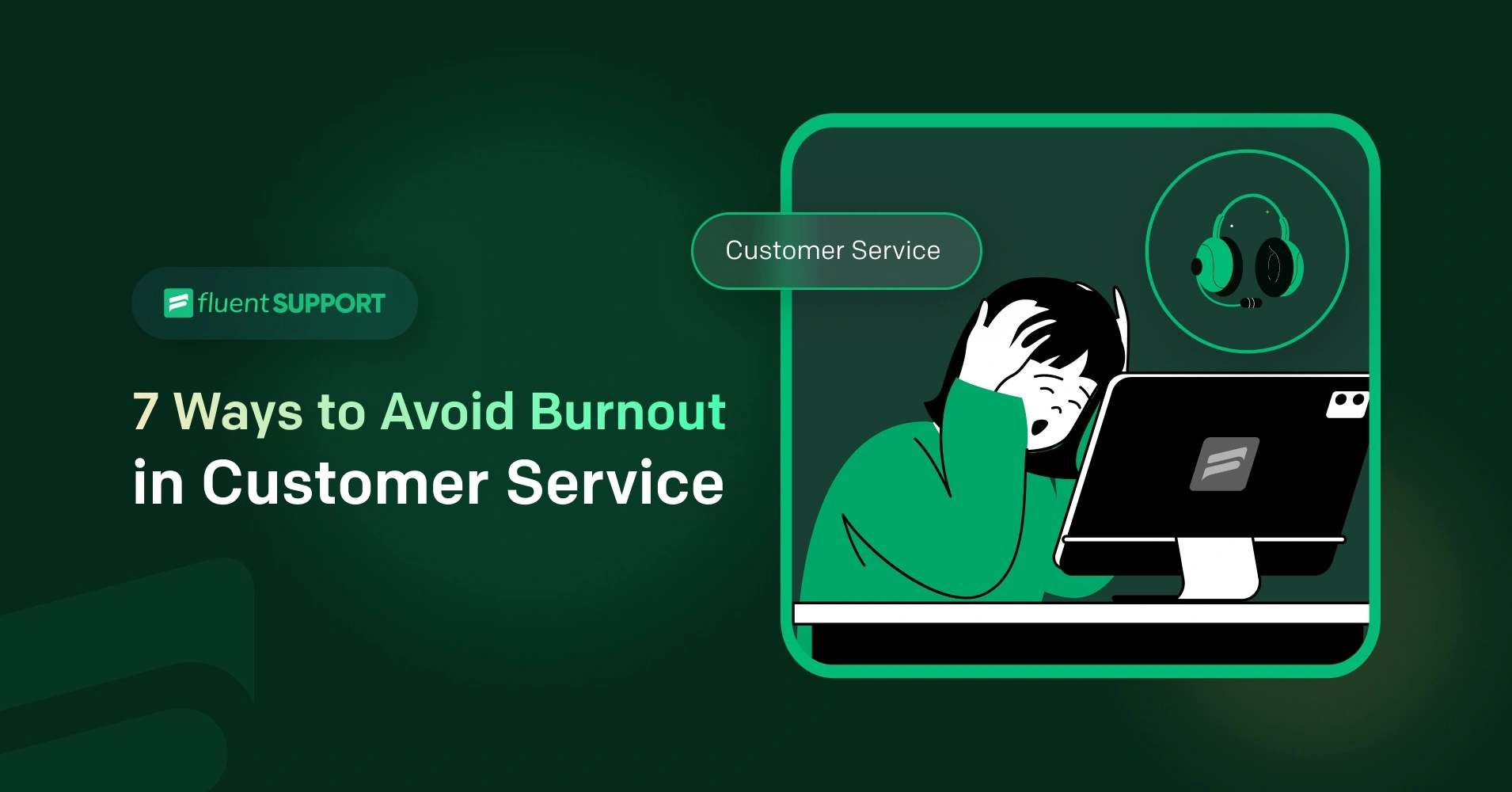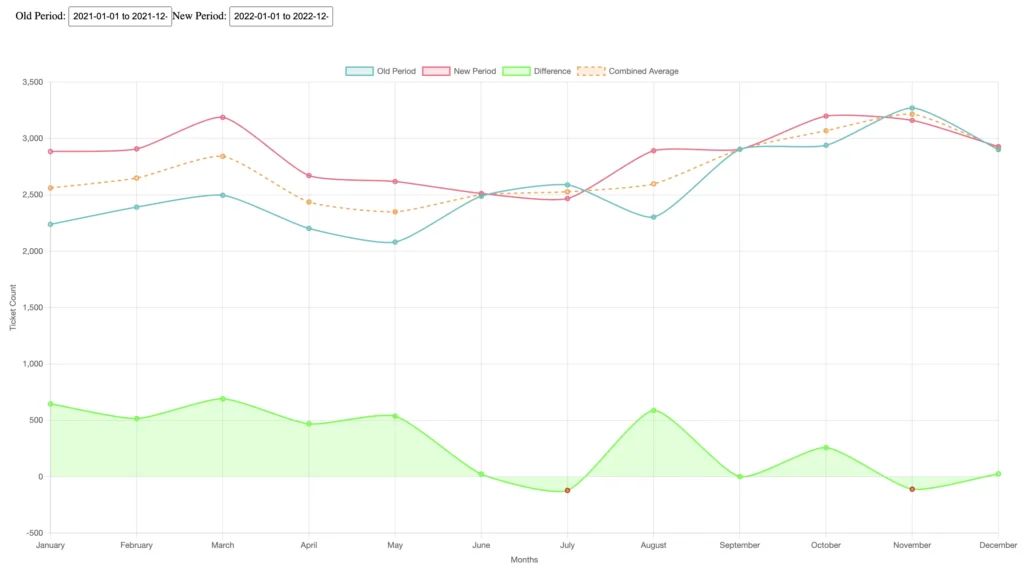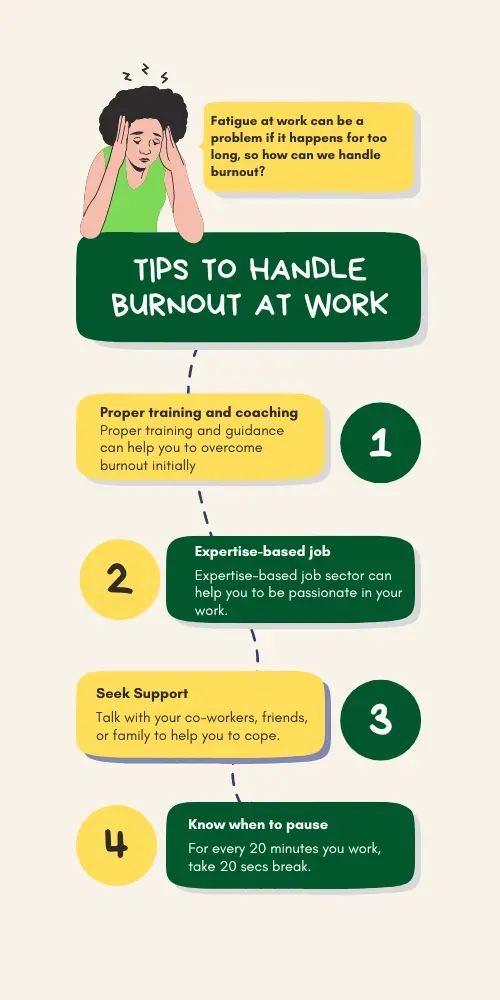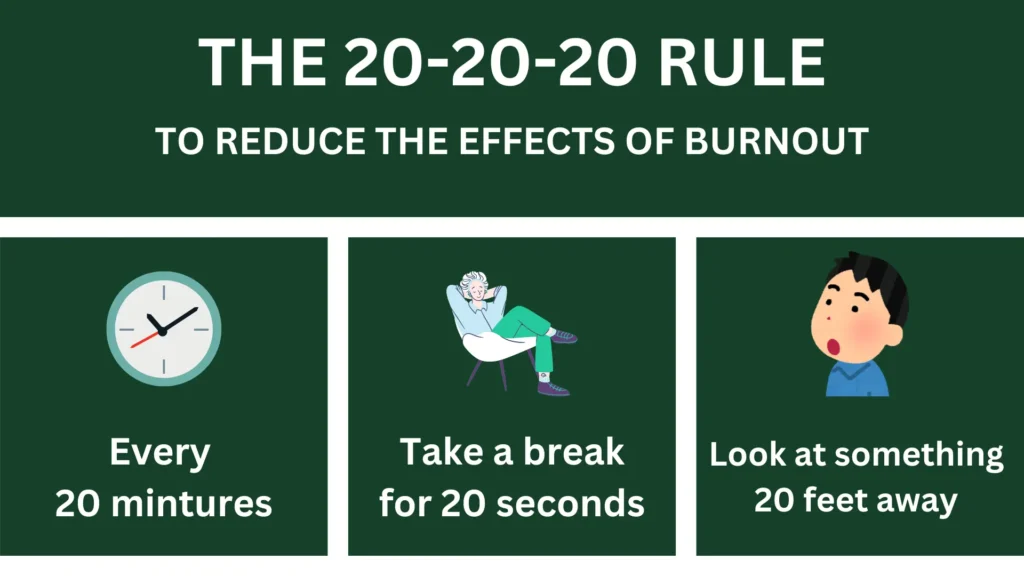
Each day is a new challenge for every customer support agent. The customers are different, the issues are different but the workload mostly remains the same.
Support agents can go through these periods as it’s part of their everyday job. However, there are times when the pressure piles up and they end up working through a heavy backlog. Managing existing tickets while taking on new ones can be exhausting and increases the risk of burnout among support agents.

“Burnout happens, but could be mitigated with proper distribution of works and by encouraging agents for the positive reviews they got.”
Md. Kamrul Islam
Head of Technical Support at WPManageNinja LLC
Burnout happens and it’s understandable. But it’s more important to know how to tackle this problem in the earlier phase. Otherwise, you can not deliver the best service and handle your customers with a joyful attitude in the long.
In this blog, we will discuss why burnout is so prevalent in the customer service industry and ways to avoid it.
Why burnout is prevalent in customer service
Customer support is one of the toughest jobs that looks simple from the outside. Support agents interact with all kinds of customers, and not everyone is easy to deal with. It’s almost certain that they’ll encounter an angry customer at least once a day.
Furthermore, the high volume of tickets works as an add-on to this pressure. The combination of high expectations and emotional stress makes burnout a prevalent issue in customer service.
Let’s explore why burnout is so common in customer service.
The pressure to meet customer expectations
Nowadays, customers want their issues fixed right away with perfection. They count on support agents to be knowledgeable, understanding, and quick. This constant demand to meet or exceed customer expectations can create a lot of pressure on support agents.
A report by Salesforce shows that “84% of customers say the experience a company provides is as important as its products or services.”
This means customer support isn’t just about solving problems anymore. It’s about making every interaction a positive one. The daily pressure to keep up these high standards can lead to stress and exhaustion.
Handling a constant flow of tickets
Picture a never-ending line of people asking for help. Before you finish helping one customer, two more need assistance. This is what many support agents deal with every day. The constant flow of requests can be immense, making it hard to keep up.
Here’s a comparison graph of a helpdesk system:

This graph shows the support ticket flow over two different years, showcasing an increase in ticket volume.
As businesses grow, the pressure on support teams mounts, requiring them to continuously enhance their performance.
Several factors contribute to this increase in ticket volume:
- Agent expertise: If an agent isn’t skilled enough in that specific area, it can slow down the ticket resolution process and create a ticket backlog.
- Technical issues: Bugs or glitches in products can trigger a flood of support requests, as customers seek solutions to their problems.
- New releases: Product launches or updates often bring unexpected challenges, causing a spike in support inquiries.
- Festivals or sales: High-traffic periods like sales or festivals lead to increased customer interactions, resulting in more tickets.
With the ever-growing ticket volume, agents often find themselves stuck in a cycle of constantly reacting to inquiries or issues. This constant pressure can lead to feelings of frustration and helplessness, which can ultimately result in burnout.
The emotional strain of difficult interactions
Customer support isn’t just about solving technical problems. But it’s also about managing the emotions of both, the customer’s and the agent’s.
Dealing with angry, frustrated, or disappointed customers can be emotionally draining. While some customers are pleasant and understanding, others can be demanding, rude, or even abusive.
According to a UK-based survey, “42% of employees feel emotionally drained from their work.” This emotional exhaustion is a key contributor to burnout, making it harder for them to maintain the positive attitude that’s essential in customer service.
Ways to avoid burnout in customer service, according to support agents
Customer service burnout is inevitable but can be mitigated by proper methods and organizations.
Let’s take a look at this image mentioned below to find out the ways at a glance.

1. Understand the signs of burnout
As we already know the prevalence of customer service burnout, we have to know what are the signs of burnout to know if our support agents are experiencing it.
According to the World Health Organization (WHO), burnout is not a medical condition but an “occupational phenomenon.” While it’s not officially a disease, it can lead to serious medical issues, including anxiety, emotional stress, and other related disorders.
Dr. Tara Narula, a cardiologist at Lenox Hill Hospital, has suggested some signs of burnout that lead people to mental stress and disorders.
Note: One of these signs alone may not indicate burnout. However, if you notice multiple signs in one individual, it could be a cause for concern.
- Fatigue: A key sign of burnout is exhaustion. When stress builds up, it drains your body and mind, leaving a constant tiredness in your body.
If an employee seems less energetic or engaged in work, it might be a sign of burnout. Pay attention to their energy levels, especially if it’s a noticeable change from their usual behavior.
- Mental detachment: Feeling mentally disconnected from your job is often a sign of burnout. You might become negative or cynical about your work. In case, someone seems less involved or indifferent to tasks they once cared about, it could indicate burnout. Keep an eye on changes in their focus or enthusiasm, as these are key signs.
- Cynicism/pessimism: People feel they are not professionally efficacious and become negative towards work or colleagues.
It’s the difference between saying “I had a bad week” and “I’m just not good at this job.” This shift can increase feelings of frustration and make daily responsibilities even harder to manage.
These can apply to any career but there are certain professions like customer support, call center, teachers, medical professionals, etc. So, by recognizing the symptoms of burnout, individuals and organizations can take proactive steps to avoid it.
By Dr. Tara Narula
2. Proper training and coaching:
Onboarding in customer service isn’t just about learning rules and regulations—it’s about mastering how to satisfy customers effectively.
New bees in the support team often struggle with calming frustrated customers, which isn’t a skill acquired magically. Without proper training and guidance during their intern period, support agents can experience significant stress, leading to burnout.
- Customer interaction training: Equip your team with the skills to handle various customer scenarios, including managing difficult conversations and intense situations.
Here’s a video that provides more insights into positive customer interactions.
- Technical skills training: Ensure agents are well-versed in the tools and technologies they’ll use daily, enabling them to solve problems efficiently and confidently.
- Stress management training: Teach techniques to manage stress and maintain mental well-being, helping agents stay balanced and focused even under pressure.
- Team-based training: Foster collaboration and support among team members, promoting a cohesive environment where employees feel valued and supported.
3. Expertise-based product sector selection
A research report from Ipsos reveals that about 64% of Americans feel stressed at work, and 33% believe this stress is negatively impacting their lives. This stress often arises when agents lack proper knowledge about their products.
Customer support team leaders recommend assigning support agents to products or sectors they are specialized in. This approach can help reduce stress and increase their interest in their work.
4. Organized workloads
Support teams should hold a daily meeting to review the number of tickets or support queries received and distribute them evenly among team members.
Since the volume of support tickets can vary each day, it’s important to actively manage this distribution to avoid overloading any single individual. An organized helpdesk system can assist in balancing workloads effectively.
If your team is regularly overwhelmed by a tidal wave of support tickets flooding the inbox outside of working hours, consider expanding your support network by hiring a global team. By bringing on additional agents, you can distribute the workload more effectively, with your international team handling requests that come in during the night, ensuring continuous coverage and faster response times.
5. Ideal systems and automation
An advanced ticket management system with workflow automation can release agents’ stress. Automation can handle recurring tickets, escalate tickets automatically, and also close if there’s a common issue.
For example, Fluent Support is a feature-rich self-hosted help desk system with AI-powered responses, automated workflow triggers, and 20+ integrations.
6. Know when to pause

“The violence of positivity does not deprive, it saturates; it does not exclude, it exhausts. That is why it proves inaccessible to unmediated perception.”
Byung-Chul Han, The Burnout Society
In The Burnout Society, the famous philosopher Byung-Chul Han warns that constant positivity doesn’t necessarily uplift us; instead, it overwhelms and exhausts us.
In customer service, the pressure to always be upbeat and productive can lead to burnout. It’s important to recognize when you’re feeling saturated and take steps to recharge. So, know when to pause, reflect, and take care of yourself.
“Today we live in a world that is very poor in interruption; “betweens” and “between-times” are lacking.”
― Byung-Chul Han, The Burnout Society
So, while it’s important to stay focused on work, remember to take breaks to restore your body and mind. Constantly working on cases can lead to burnout.
In this case, the 20-20-20 rule can be a great practice. The rule says that for every 20 minutes spent looking at a screen, you take a 20-second break, move around, and look at something 20 feet away, which relaxes the eye muscles for 20 seconds and gives your brain a much-needed respite.

Here are some methods for taking effective breaks:
- Stress-relieving activities
- Colleague interactions
- Focused breathing
- Ergonomic chairs and desks
Therefore, know when to step away and return with a refreshed mind. Use these methods for continuous healing and avoid burnout.
7. Celebrating wins and positive feedback
Recognizing and celebrating achievements is crucial in customer support. It boosts morale and the value of hard work. Make it a habit to acknowledge both individual and team successes, whether it’s resolving a challenging case or receiving positive feedback from a customer.
Here are a few ways to recognize employees:
- Birthday celebrations
- Employee of the Month awards
- Days off for volunteering
- Hybrid work models
A simple compliment can be the key to preventing someone from feeling overwhelmed and helping them stay motivated, particularly in customer service, where negativity from customer complaints can be prevalent.
Wrapping up
Customer support agents face tough challenges and deal with numerous issues daily, leading to mental exhaustion and burnout.
However, to ensure high-quality service and customer satisfaction, proactive and well-supported customer support agents are crucial.
The success of the entire customer service industry relies on these support agents. Prioritizing their mental health and well-being is essential. If burnout isn’t mitigated, it can negatively impact the company.
Start off with a powerful ticketing system that delivers smooth collaboration right out of the box.












Leave a Reply